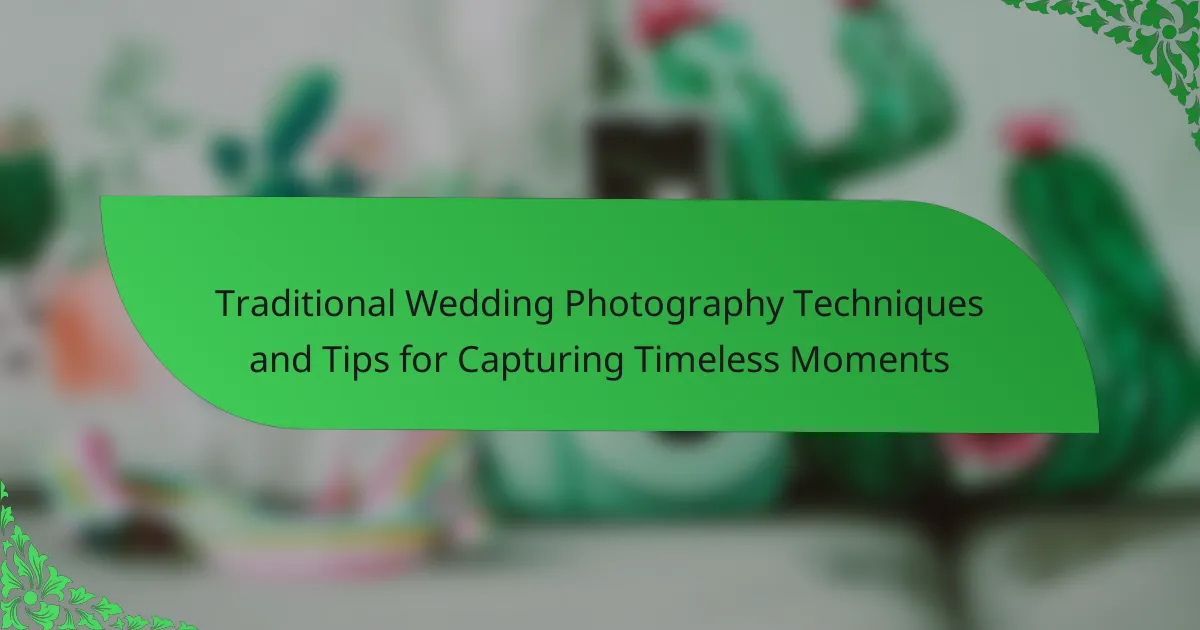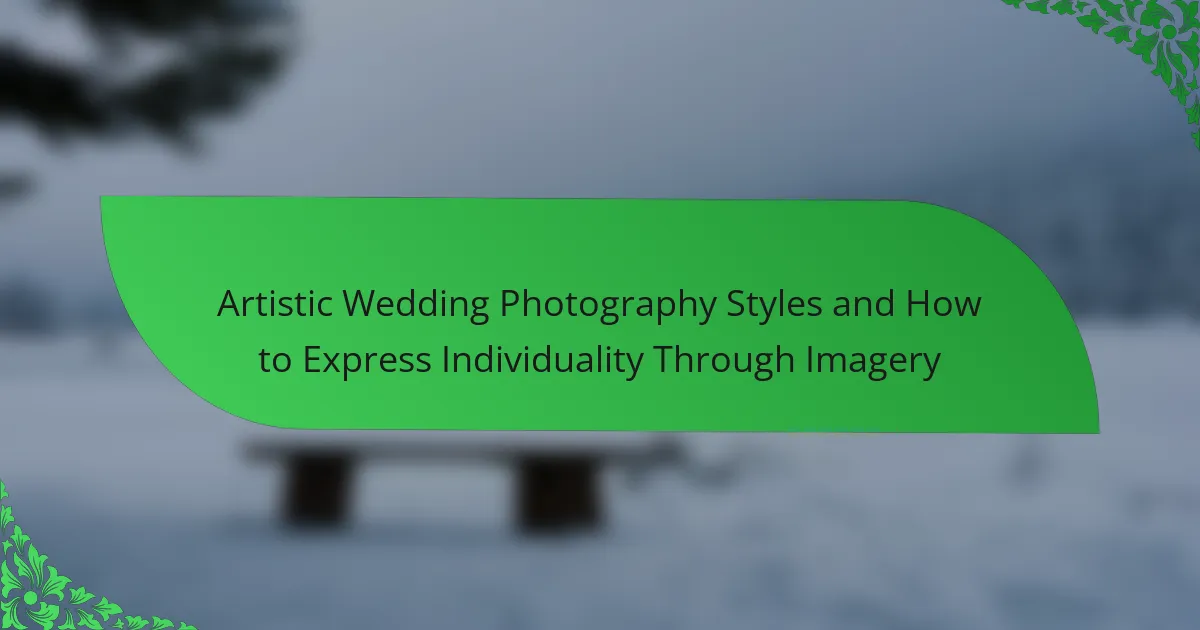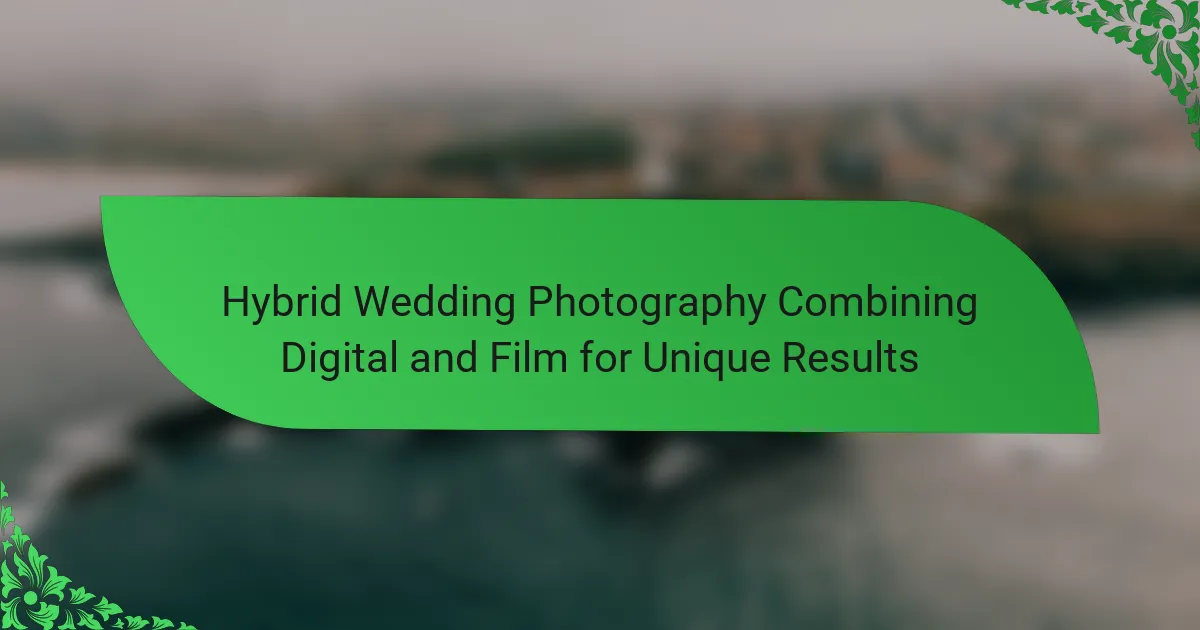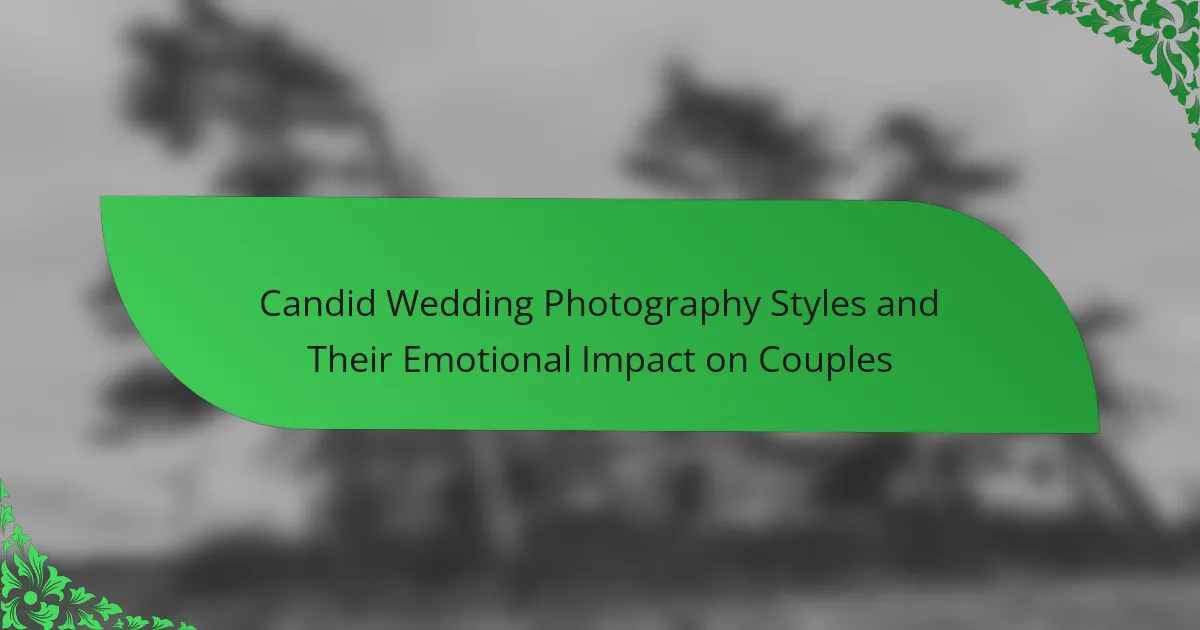Traditional wedding photography encompasses various techniques, including posed portraits, candid shots, and detail captures, each contributing to a comprehensive narrative of the wedding day. Posed portraits ensure that couples and families are formally arranged and looking their best, while candid shots capture genuine emotions and spontaneous moments. Detail captures focus on significant elements like rings and flowers. To enhance these techniques, effective planning and communication with the couple are essential, including creating a shot list and scouting the venue for optimal lighting. Common challenges faced by photographers include unpredictable lighting conditions, managing large groups for portraits, and the risk of equipment failure, necessitating backup gear and professional demeanor throughout the event.
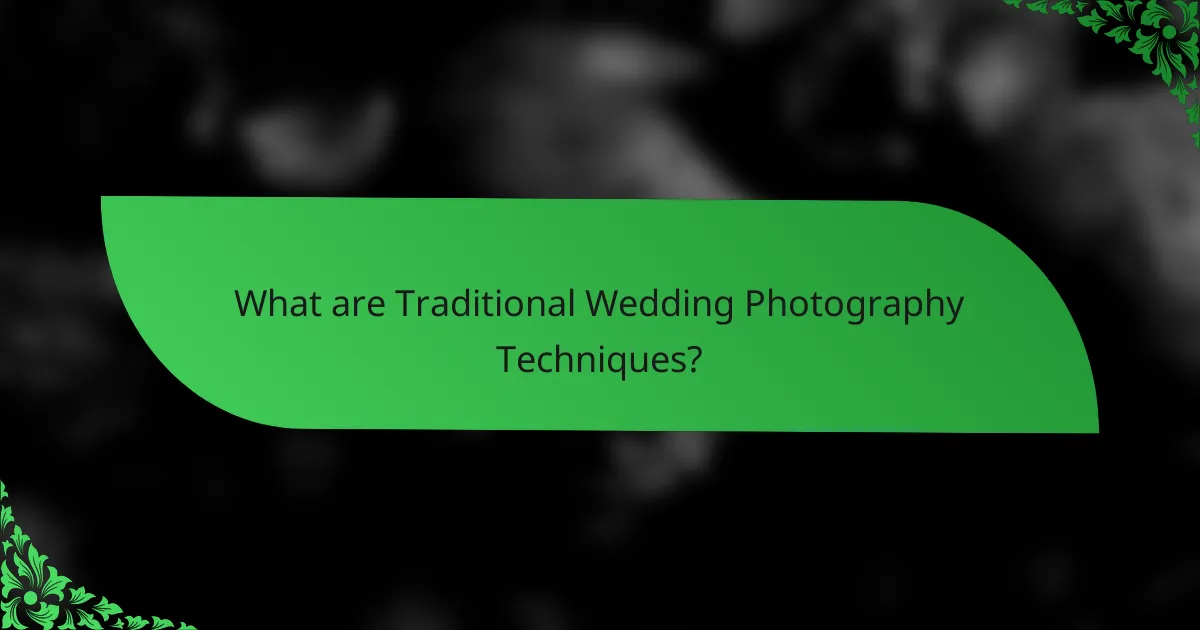
What are Traditional Wedding Photography Techniques?
Traditional wedding photography techniques include posed portraits, candid shots, and detail captures. Posed portraits focus on formal arrangements of the couple and their families. This technique ensures everyone is included and looking their best. Candid shots capture genuine emotions and spontaneous moments throughout the event. Detail captures focus on elements like rings, flowers, and decorations. These techniques create a comprehensive narrative of the wedding day. Traditional photographers often use natural lighting to enhance image quality. They may also employ classic framing and composition methods for aesthetic appeal.
How do Traditional Wedding Photography Techniques differ from Modern Approaches?
Traditional wedding photography techniques primarily focus on posed shots and formal portraits. These techniques often involve staged settings and a structured timeline. Photographers typically direct subjects for ideal framing and composition. The emphasis is on capturing significant moments through a classic lens.
In contrast, modern approaches prioritize candid photography and natural moments. Photographers often adopt a more photojournalistic style. This method captures genuine emotions and spontaneous interactions. Modern techniques utilize advanced equipment and editing software for creative effects.
Additionally, traditional photography may rely on film, while modern methods predominantly use digital formats. Digital photography allows for immediate feedback and adjustments. Overall, the shift reflects broader changes in societal values surrounding weddings and personal expression.
What are the key characteristics of Traditional Wedding Photography?
Traditional Wedding Photography is characterized by posed portraits and formal compositions. It focuses on capturing key moments such as the ceremony, family portraits, and couple’s first look. This style emphasizes classic aesthetics and timelessness. Often, photographers use natural light and soft colors to enhance the romantic feel. Attention to detail is crucial, ensuring all elements are in place before capturing a shot. Traditional Wedding Photography also includes candid moments, but they are secondary to the posed shots. This approach often results in a comprehensive visual narrative of the wedding day. The use of film was historically common, contributing to the distinct look of images.
Why are these techniques still relevant today?
Traditional wedding photography techniques remain relevant today due to their ability to capture timeless moments. These techniques emphasize natural lighting and candid shots, which create authentic emotions in photographs. They also focus on composition and storytelling, providing a narrative of the wedding day. The use of classic poses and settings adds a sense of elegance and nostalgia. Many couples appreciate the artistry involved in these techniques. Studies show that couples often prefer traditional styles for their emotional resonance. Additionally, these techniques are adaptable to modern trends, ensuring they fit contemporary aesthetics. Thus, traditional techniques continue to hold significant value in wedding photography.
What are the essential skills for a Traditional Wedding Photographer?
Essential skills for a Traditional Wedding Photographer include technical proficiency, creativity, and communication. Technical proficiency involves understanding camera settings and lighting techniques. This ensures high-quality images in various conditions. Creativity allows photographers to capture unique perspectives and moments. Effective communication skills are vital for interacting with clients and directing subjects. Time management is also crucial for coordinating schedules and capturing key moments. Additionally, knowledge of post-processing techniques enhances the final product. These skills collectively contribute to a successful wedding photography experience.
How important is composition in Traditional Wedding Photography?
Composition is crucial in Traditional Wedding Photography. It determines how elements are arranged within the frame. Good composition enhances storytelling and emotional impact. It guides the viewer’s eye to focal points, such as the couple’s expressions. Techniques like the rule of thirds and leading lines are commonly used. These methods create balance and visual interest in images. A well-composed photograph can evoke feelings and preserve memories effectively. Studies show that composition significantly affects viewer engagement and perception.
What role does lighting play in capturing timeless moments?
Lighting is crucial in capturing timeless moments as it influences mood, clarity, and detail in photographs. Proper lighting enhances the emotional impact of images. It can create highlights and shadows that add depth to the scene. Natural light, especially during golden hour, offers a warm, soft quality that flatters subjects. Artificial lighting techniques, such as softboxes or reflectors, can also achieve desired effects. Studies show that well-lit images are more likely to evoke nostalgia and connection. For instance, a photograph taken in soft, diffused light can evoke a sense of intimacy. Thus, mastering lighting techniques is essential for photographers aiming to create lasting memories.
What equipment is necessary for Traditional Wedding Photography?
A digital camera with interchangeable lenses is necessary for traditional wedding photography. This allows for versatility in capturing various scenes and details. A standard zoom lens, such as a 24-70mm, is ideal for most situations. A prime lens, like a 50mm or 85mm, is excellent for portraits. A sturdy tripod is essential for stability during low-light conditions. External flash units enhance lighting, especially during evening events. Extra memory cards and batteries ensure continuous shooting without interruptions. A camera bag protects the equipment during transport. These items collectively support the photographer in capturing timeless moments effectively.
Which cameras are best suited for Traditional Wedding Photography?
DSLR cameras are best suited for traditional wedding photography. They offer high image quality and excellent low-light performance. Popular models include the Canon EOS 5D Mark IV and Nikon D850. Both cameras have full-frame sensors, which enhance depth of field control. Their autofocus systems are reliable for capturing moving subjects. Additionally, these cameras support a wide range of lenses. This versatility allows photographers to adapt to various shooting situations. Many professional photographers prefer these models for their durability and performance.
What lenses should a photographer consider for capturing weddings?
A photographer should consider prime and zoom lenses for capturing weddings. Prime lenses, such as 50mm and 85mm, offer wide apertures for low-light situations. These lenses produce sharp images with beautiful bokeh. Zoom lenses, like 24-70mm and 70-200mm, provide versatility for different shooting distances. They allow photographers to quickly adjust framing without changing lenses. The 24-70mm lens is ideal for group shots and candid moments. The 70-200mm lens excels in capturing intimate details from a distance. Using a combination of these lenses helps ensure comprehensive coverage of the event.
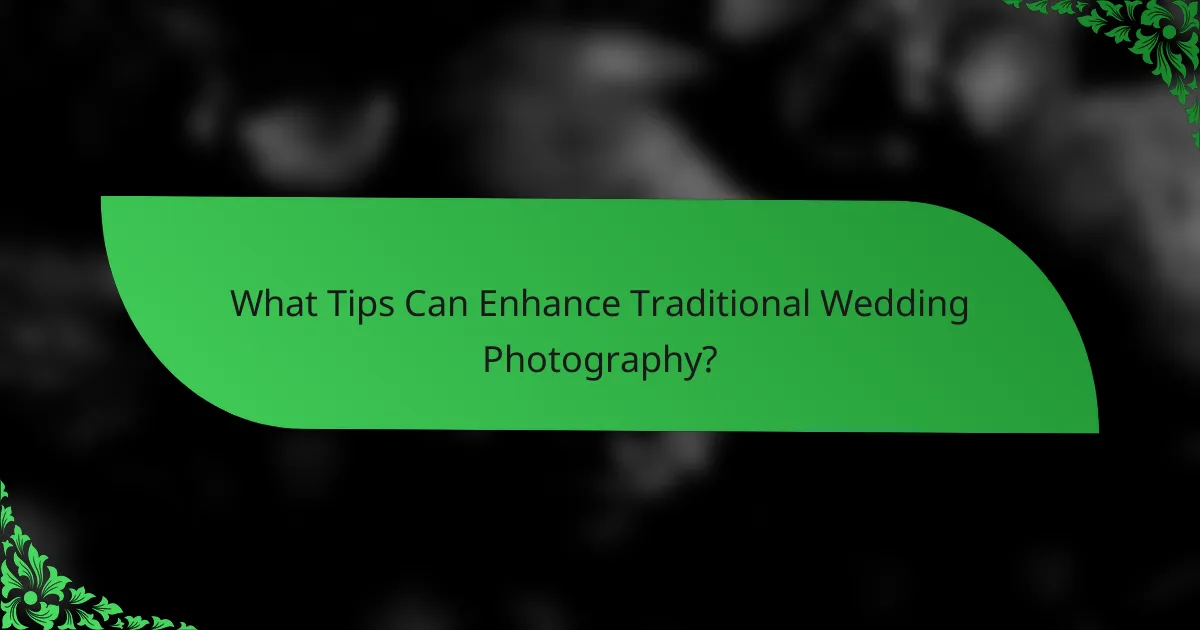
What Tips Can Enhance Traditional Wedding Photography?
To enhance traditional wedding photography, focus on planning and communication. Discuss the couple’s vision before the event. Create a shot list of must-have moments. Scout the venue for optimal lighting and backgrounds. Use natural light whenever possible for softer images. Capture candid moments to reflect genuine emotions. Ensure proper equipment is ready, including backups. Engage with guests for dynamic interactions. Review and edit photos for a polished final product.
How can photographers prepare for a Traditional Wedding shoot?
Photographers can prepare for a Traditional Wedding shoot by creating a detailed shot list. This list should include key moments like the ceremony, family portraits, and reception highlights. Next, they should familiarize themselves with the wedding venue. Understanding the layout helps in planning for lighting and angles.
Photographers should also communicate with the couple beforehand. This conversation can clarify expectations and preferred styles. Additionally, they must check their equipment thoroughly. Ensuring cameras, lenses, and batteries are in working order is crucial.
Practicing with similar lighting conditions is beneficial. This practice allows photographers to adapt to various environments. Lastly, arriving early on the wedding day provides time for setup and adjustments. This preparation ensures they capture every important moment effectively.
What is the importance of a pre-wedding consultation?
A pre-wedding consultation is crucial for aligning the photographer’s vision with the couple’s expectations. It establishes clear communication about the couple’s preferences and desired style. This meeting allows the photographer to understand key moments that the couple wants captured. It also provides an opportunity to discuss the timeline and logistics of the wedding day. By addressing these details, potential issues can be identified and resolved in advance. Research indicates that effective planning significantly enhances the overall photography experience. A study by The Knot found that 80% of couples who had a consultation felt more confident in their photographer’s ability to deliver. Therefore, a pre-wedding consultation is essential for ensuring a successful photography outcome.
How can a photographer create a shot list for the wedding day?
A photographer can create a shot list for the wedding day by first consulting with the couple. This ensures that their specific preferences and must-have shots are included. Next, the photographer should outline key moments such as the ceremony, reception, and portraits. It is essential to categorize shots into groups, like family, couple, and details. The photographer can also refer to examples from previous weddings for inspiration. Additionally, discussing the timeline with the couple helps in organizing the shots efficiently. Finally, sharing the shot list with the couple for approval ensures all important moments are captured.
What techniques can be used to capture candid moments?
To capture candid moments, photographers should use techniques such as being unobtrusive, using a longer lens, and anticipating actions. Being unobtrusive allows subjects to act naturally without feeling posed. Using a longer lens helps to maintain distance, which can make subjects more comfortable. Anticipating actions involves observing interactions and preparing to shoot at the right moment. Additionally, capturing emotions and expressions can enhance the authenticity of the moment. Utilizing natural light can also improve the quality of candid shots. These techniques are widely recognized in photography circles for their effectiveness in capturing genuine moments.
How can photographers blend into the background during the event?
Photographers can blend into the background during an event by wearing neutral clothing. This helps them avoid drawing attention. They should also use a quiet camera to minimize noise. Positioning themselves strategically behind guests can further reduce visibility. Observing moments without intruding allows for natural shots. Additionally, using longer lenses can help capture images from a distance. These techniques ensure that photographers remain unobtrusive. Studies show that candid moments are often more genuine when photographers are less noticeable.
What strategies help in capturing emotional reactions during the ceremony?
To capture emotional reactions during the ceremony, photographers should focus on candid moments. This involves anticipating key emotional events, such as vows and first looks. Using a long lens allows for unobtrusive shots that preserve genuine expressions. Additionally, positioning the camera at eye level enhances emotional connection in the images. Lighting plays a crucial role; natural light often brings out warmth in emotions. Timing is essential; capturing reactions immediately after significant moments ensures authenticity. Engaging with subjects beforehand helps build rapport, making them more comfortable. Research indicates that candid photography can evoke stronger emotional responses in viewers, reinforcing the effectiveness of these strategies.
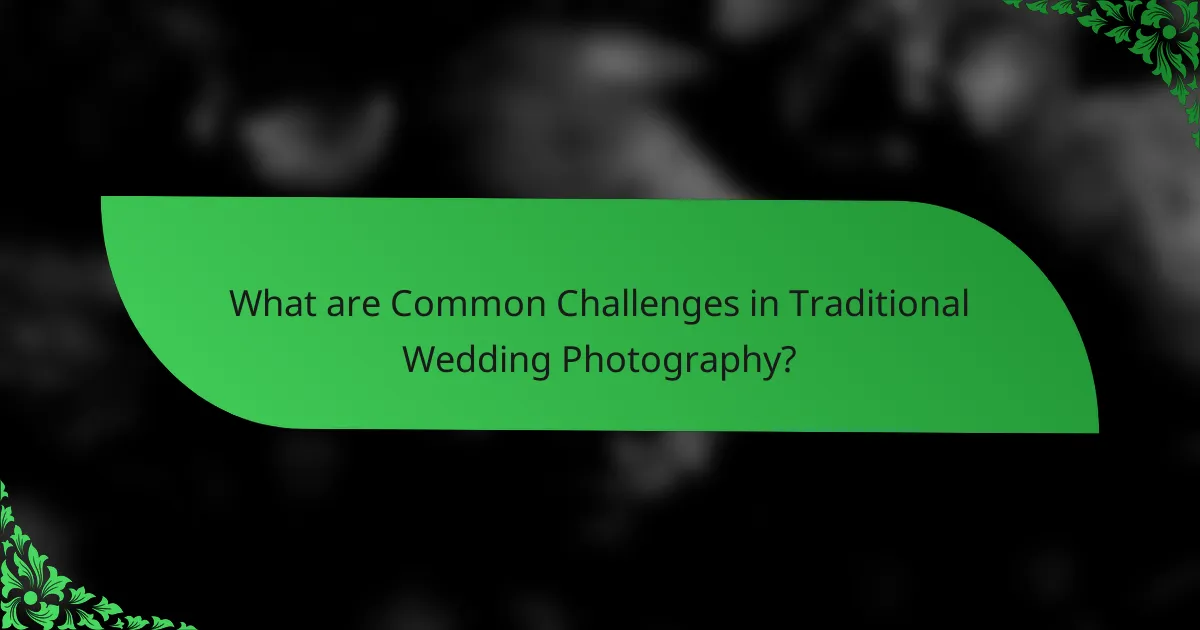
What are Common Challenges in Traditional Wedding Photography?
Common challenges in traditional wedding photography include unpredictable lighting conditions. Photographers often face varying light levels throughout the event. This can lead to issues with exposure and color balance. Another challenge is managing large groups of people for portraits. Coordinating everyone can be time-consuming and stressful. Additionally, capturing candid moments while maintaining a professional demeanor is difficult. Photographers must balance being unobtrusive with ensuring they capture key moments. Lastly, equipment failure can occur, impacting the ability to take quality photos. Backup gear is essential to mitigate this risk.
How can photographers handle unpredictable lighting conditions?
Photographers can handle unpredictable lighting conditions by using various techniques. They should adjust their camera settings, such as increasing ISO or opening the aperture. This allows for better exposure in low light. Using reflectors can help bounce light onto subjects, enhancing visibility. Additionally, photographers can utilize flash to fill in shadows. Understanding the direction of natural light aids in positioning subjects effectively. Experimenting with exposure compensation can also help adapt to sudden changes in lighting. Many professionals recommend shooting in RAW format for greater editing flexibility. These methods ensure high-quality images despite fluctuating lighting conditions.
What are effective techniques for managing indoor vs outdoor lighting?
Effective techniques for managing indoor and outdoor lighting include using natural light, adjusting exposure settings, and employing reflectors. Indoor lighting can be enhanced with soft diffused light sources to reduce harsh shadows. Utilizing window light during the day creates a flattering effect. For outdoor settings, shooting during the golden hour provides warm, soft illumination. Adjusting the camera’s ISO and aperture settings helps control light exposure effectively. Using reflectors can bounce light onto subjects, improving overall brightness. Understanding the direction and quality of light is crucial for achieving desired results in both environments.
How can photographers adapt to changing weather conditions during a wedding?
Photographers can adapt to changing weather conditions during a wedding by preparing in advance. They should monitor weather forecasts closely leading up to the event. Having backup plans is essential; this includes alternative indoor locations for key shots. Photographers should also invest in weatherproof equipment to protect their gear. Using reflectors can help manage harsh lighting, especially in sunny conditions. In rainy weather, photographers can use umbrellas creatively for both protection and unique shots. Adjusting camera settings quickly is vital to accommodate changing light conditions. Finally, being flexible and communicating with the couple can help manage expectations and ensure a successful shoot despite the weather.
What are some best practices for post-wedding editing?
Best practices for post-wedding editing include organizing photos immediately after the event. This allows for efficient workflow and easy access to images. Next, select the best shots that capture key moments and emotions. Use editing software to enhance colors and correct exposure. Consistency in editing style is crucial for a cohesive final album. Additionally, consider cropping images to improve composition and focus on subjects. It is also beneficial to back up all edited files to prevent loss. Lastly, seek feedback from clients before finalizing the album to ensure satisfaction.
How can photographers maintain a consistent style in their edits?
Photographers can maintain a consistent style in their edits by using preset filters or editing styles. This approach allows for uniformity across different images. Consistency in color grading is essential for a cohesive look. Photographers should also establish a specific editing workflow. This workflow can include steps like exposure adjustments and contrast settings. Additionally, photographers should regularly review their past edits for reference. Keeping a mood board can help in visualizing the desired style. Finally, practicing and refining their technique over time contributes to a recognizable editing style.
What editing software is most beneficial for Traditional Wedding Photography?
Adobe Lightroom is the most beneficial editing software for Traditional Wedding Photography. It offers powerful tools for organizing and editing images. Lightroom’s user-friendly interface allows photographers to enhance colors and correct exposure easily. Additionally, it supports batch processing, which saves time when editing multiple images. The software includes presets that can streamline the editing process. Many professional wedding photographers rely on Lightroom for its efficiency and versatility. Its ability to create a consistent look across a wedding album is particularly valuable. Overall, Lightroom is widely recognized in the industry for its effectiveness in wedding photography.
What practical tips can improve Traditional Wedding Photography outcomes?
To improve Traditional Wedding Photography outcomes, focus on planning and communication. Discuss the shot list with the couple before the event. This ensures all important moments are captured. Scout the venue in advance to identify the best locations for photos. Consider the lighting conditions at different times of the day. Use natural light whenever possible for softer images.
Incorporate candid shots alongside posed ones to capture genuine emotions. Encourage the couple and guests to relax and be themselves. This results in more authentic expressions. Utilize a variety of angles and compositions for diverse images.
Ensure you have backup equipment to avoid technical issues. A second shooter can also help capture different perspectives. Lastly, review the images regularly during the event to ensure key moments are not missed. Following these tips can significantly enhance the quality of wedding photography outcomes.
Traditional Wedding Photography Techniques focus on capturing timeless moments through posed portraits, candid shots, and detail captures. This article outlines the key characteristics of traditional photography, emphasizing the importance of composition, lighting, and essential equipment, such as DSLR cameras and specific lenses. It also highlights the differences between traditional and modern approaches, the skills required for photographers, and practical tips for enhancing photography outcomes. Additionally, the article addresses common challenges and best practices for post-wedding editing to ensure a cohesive final product.
